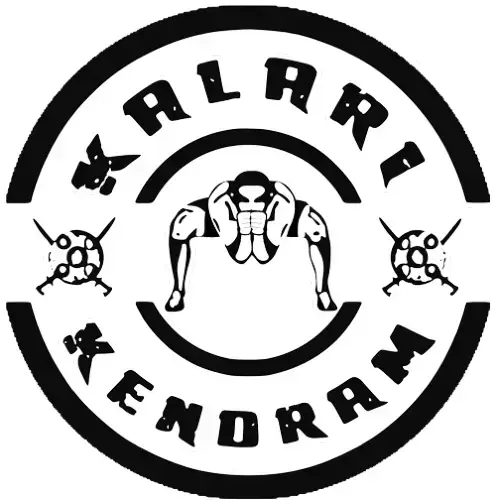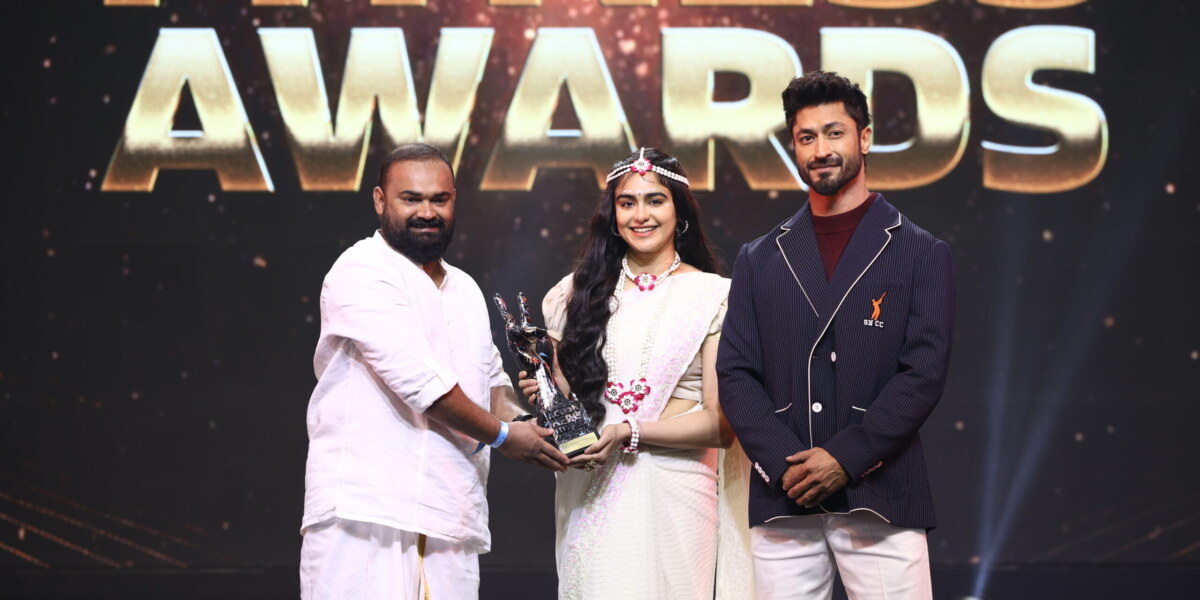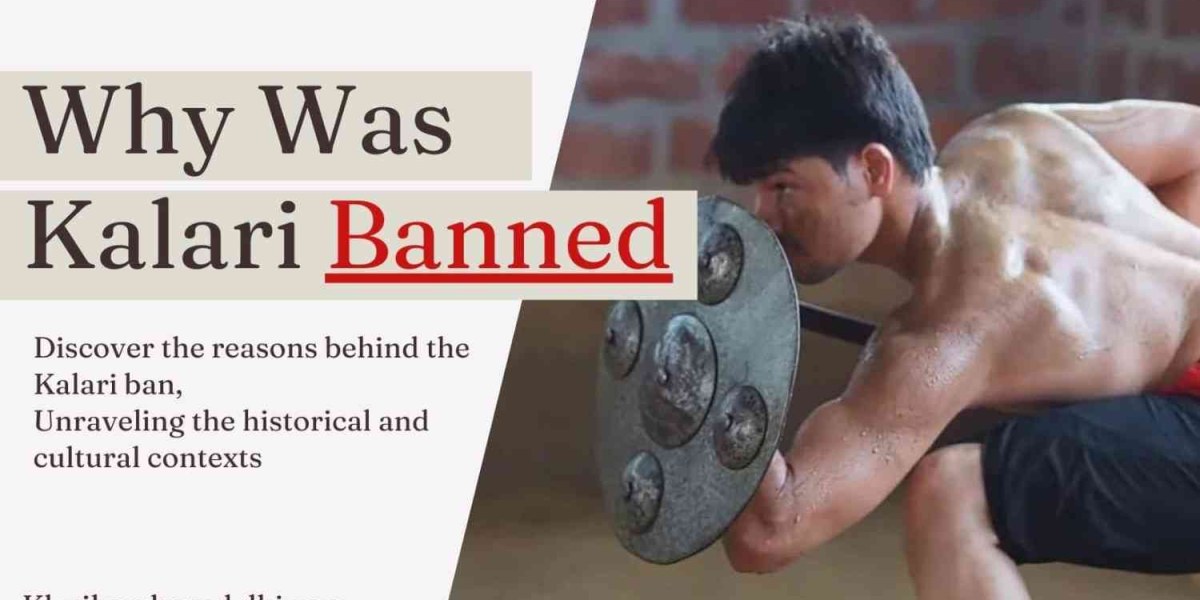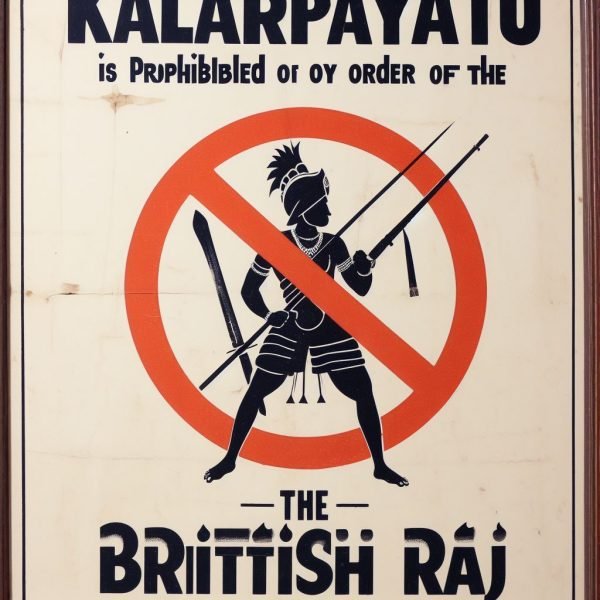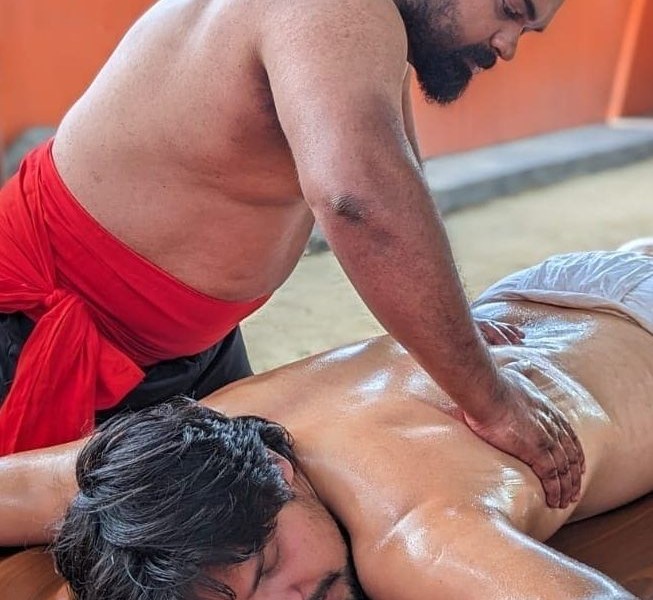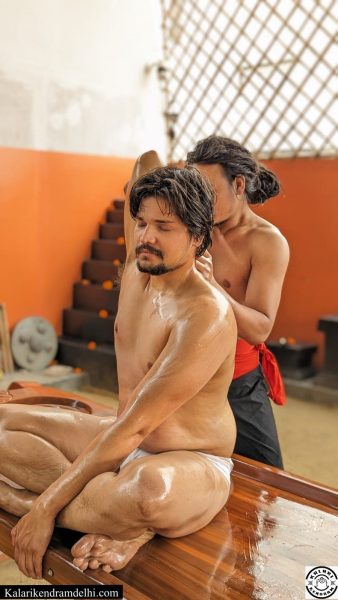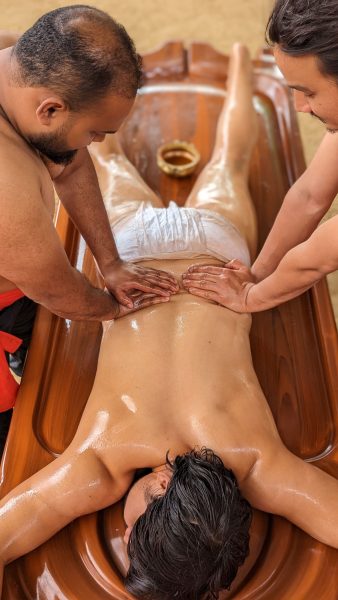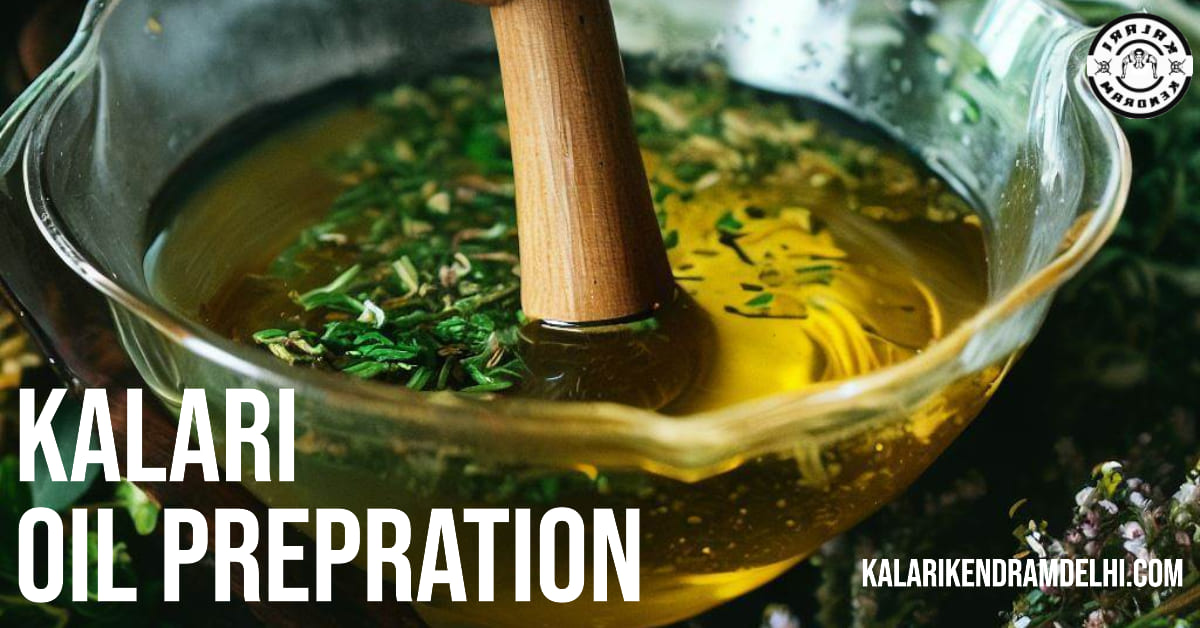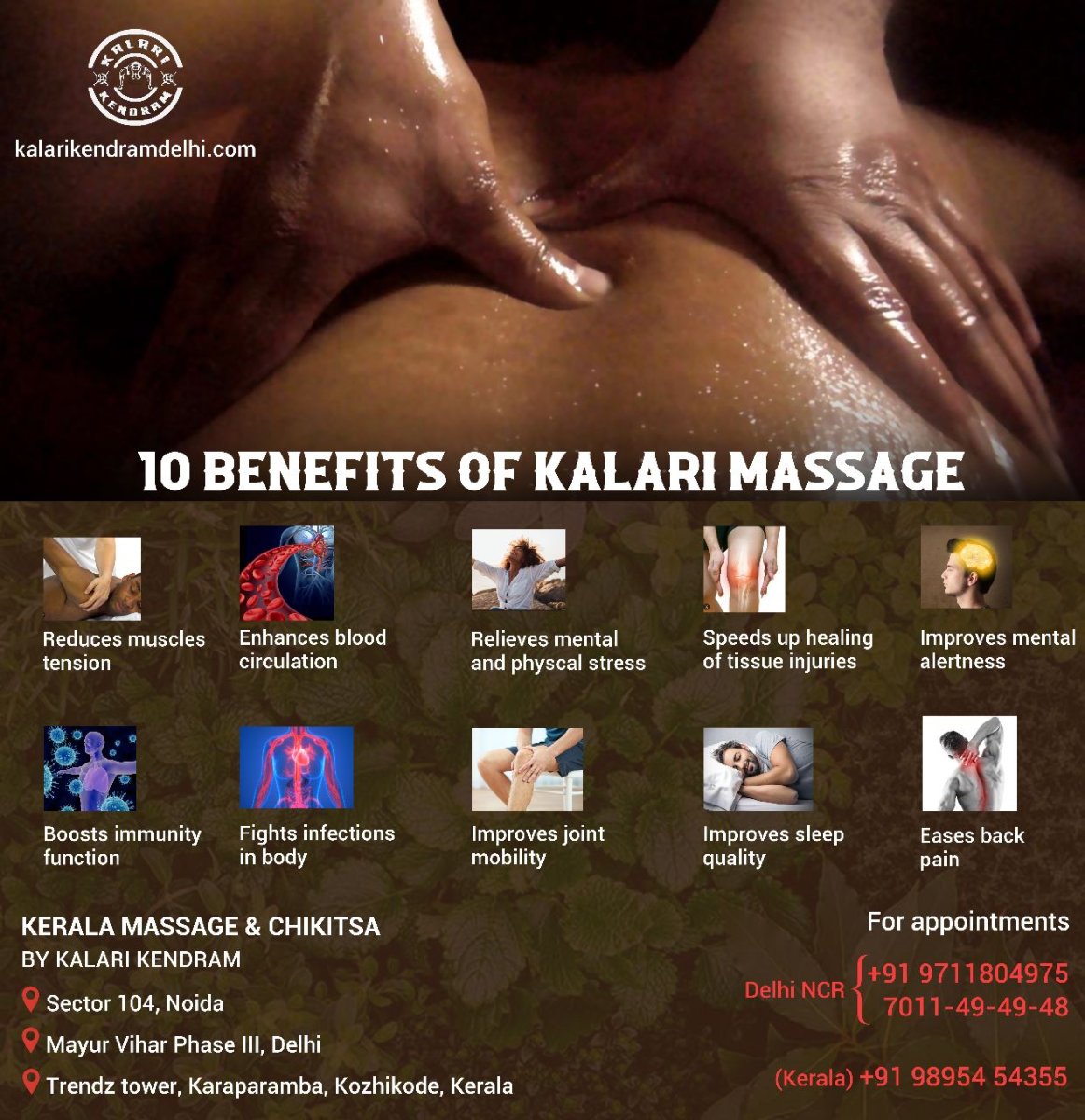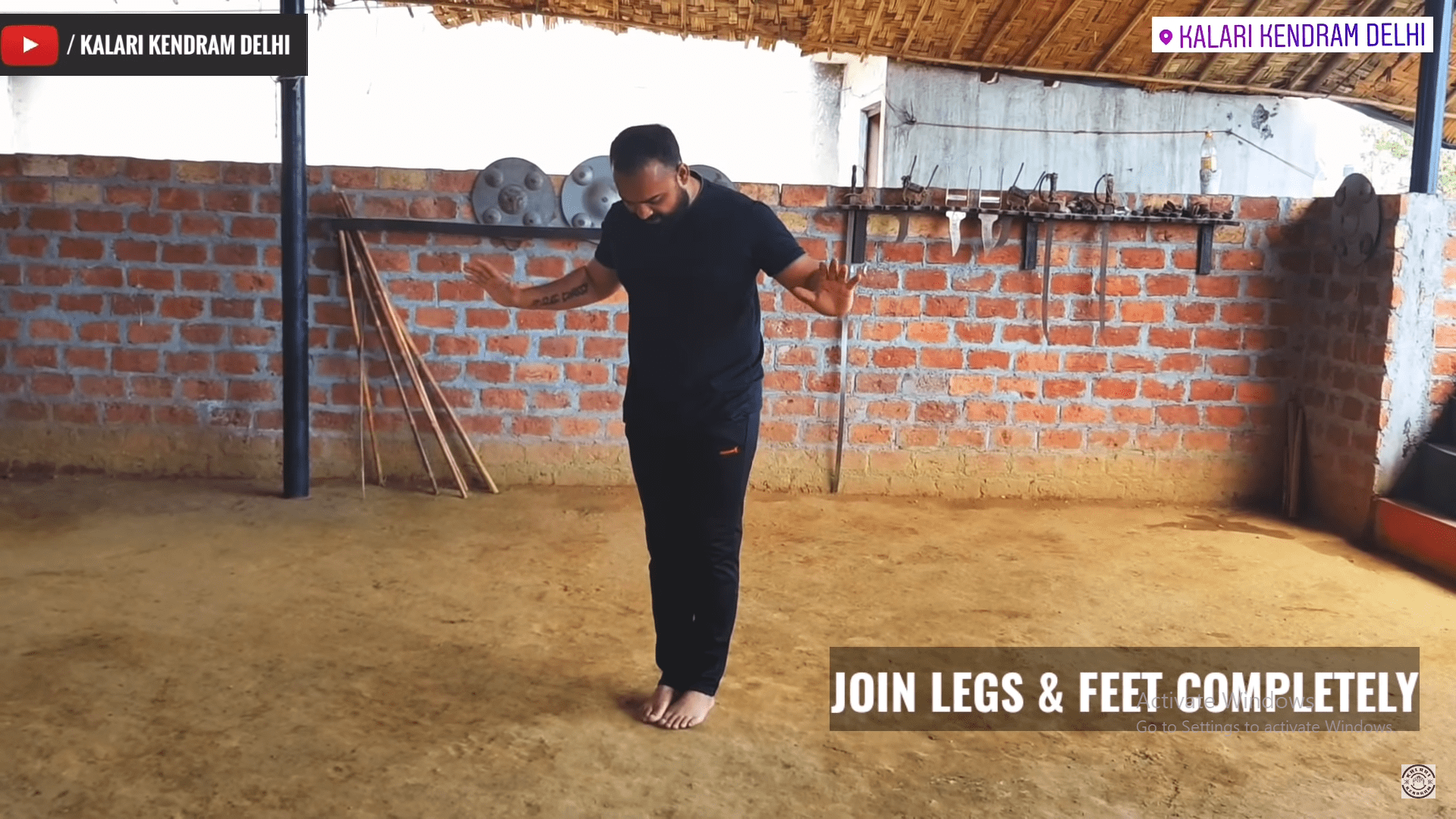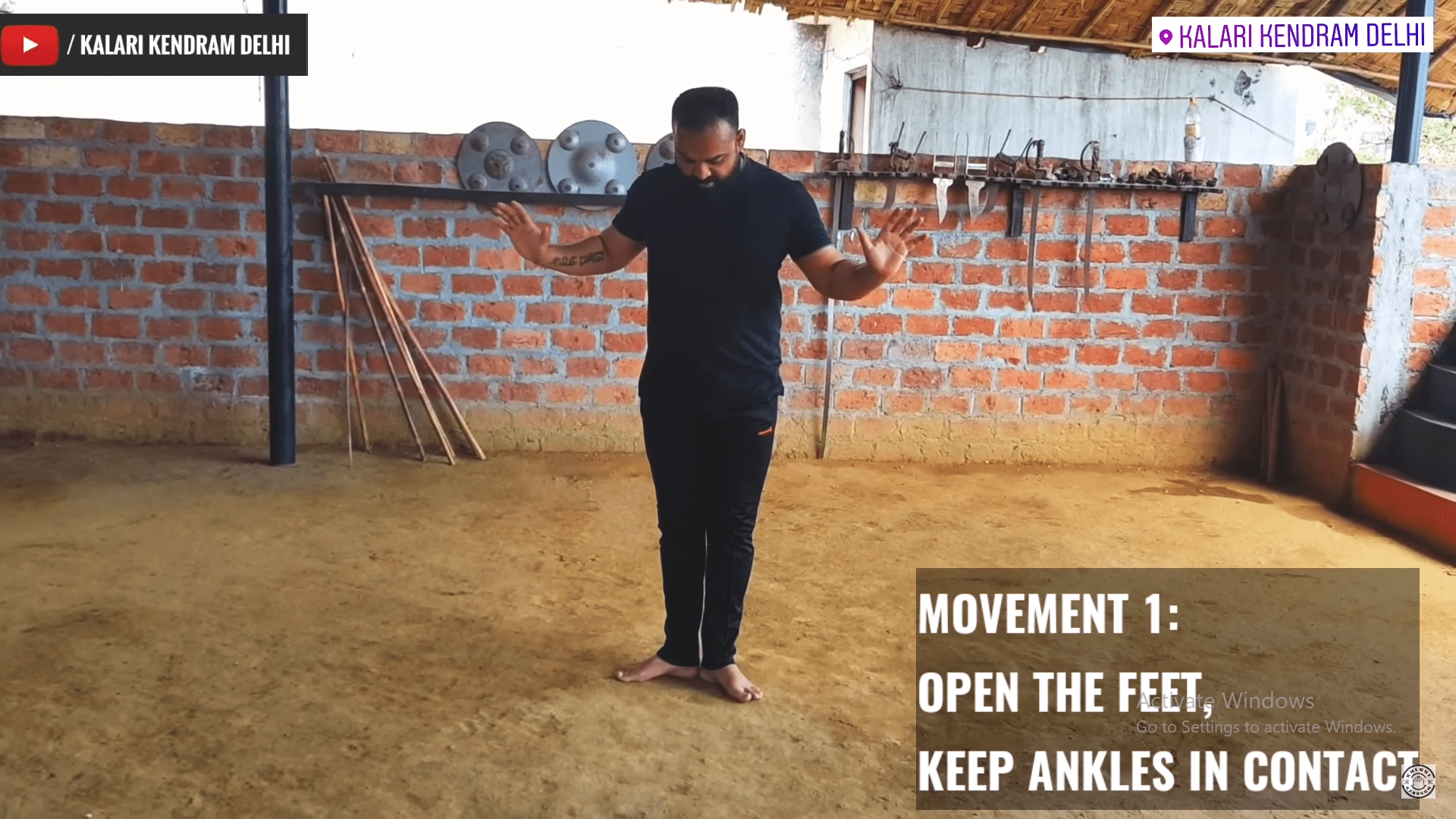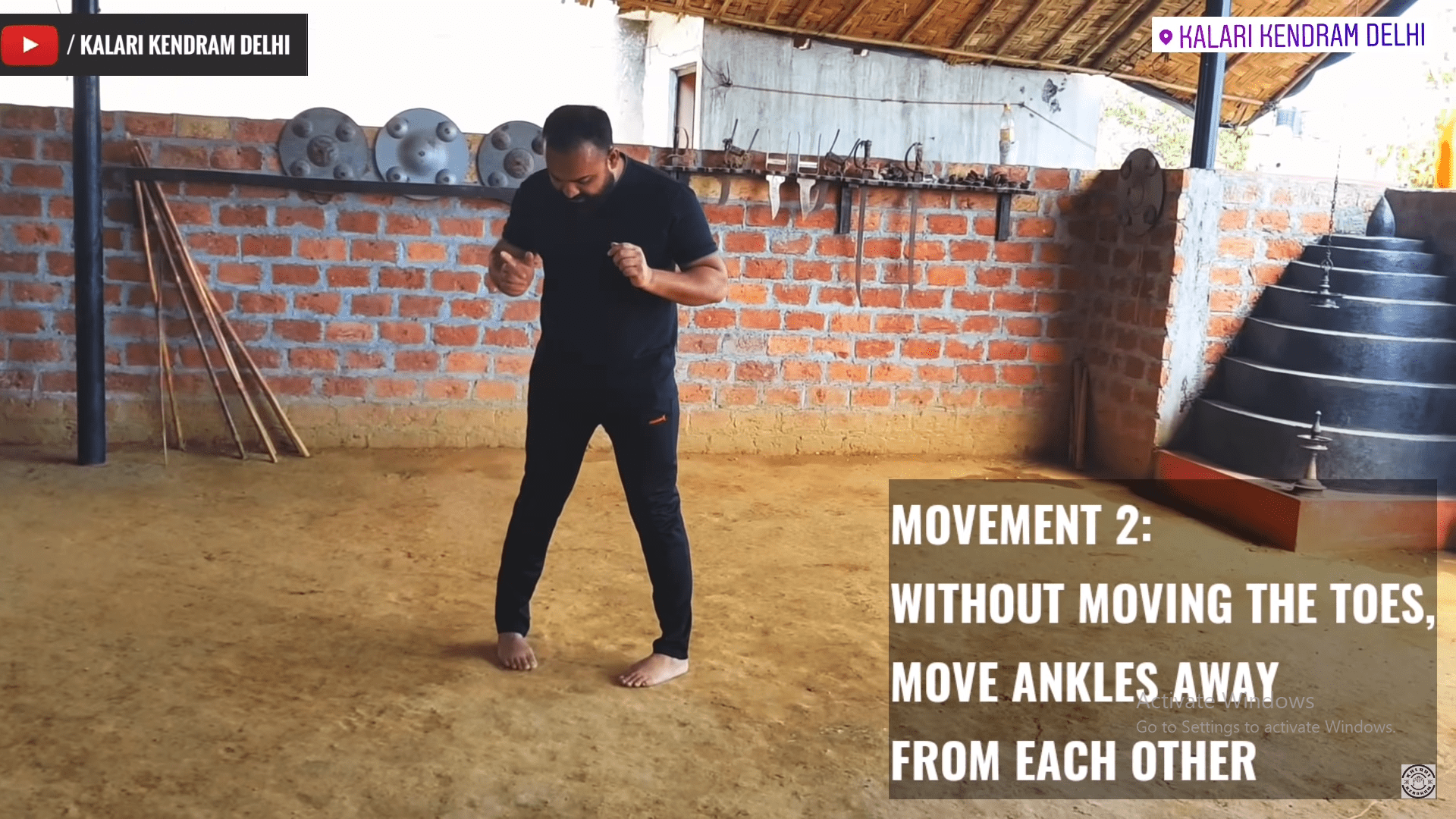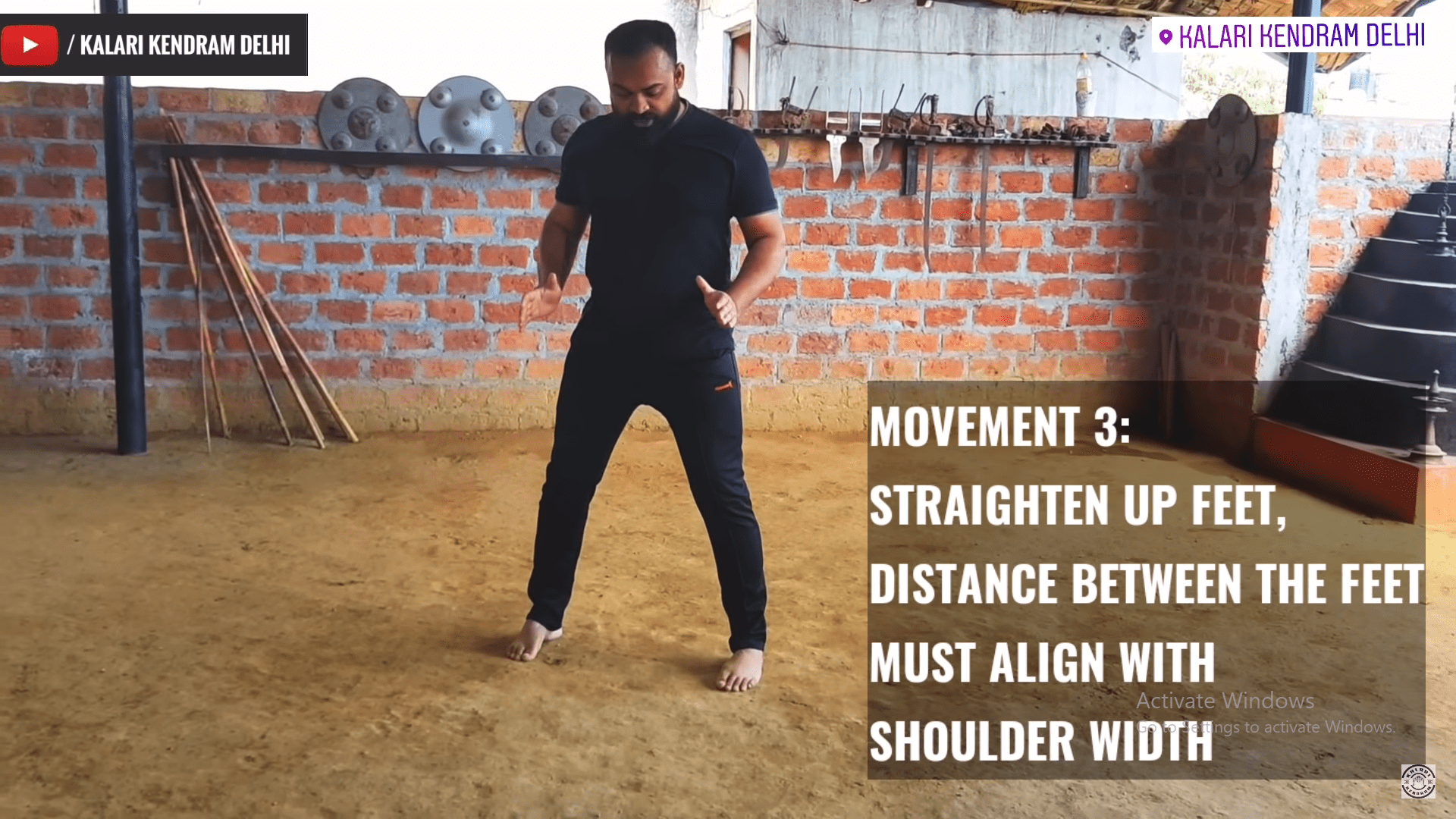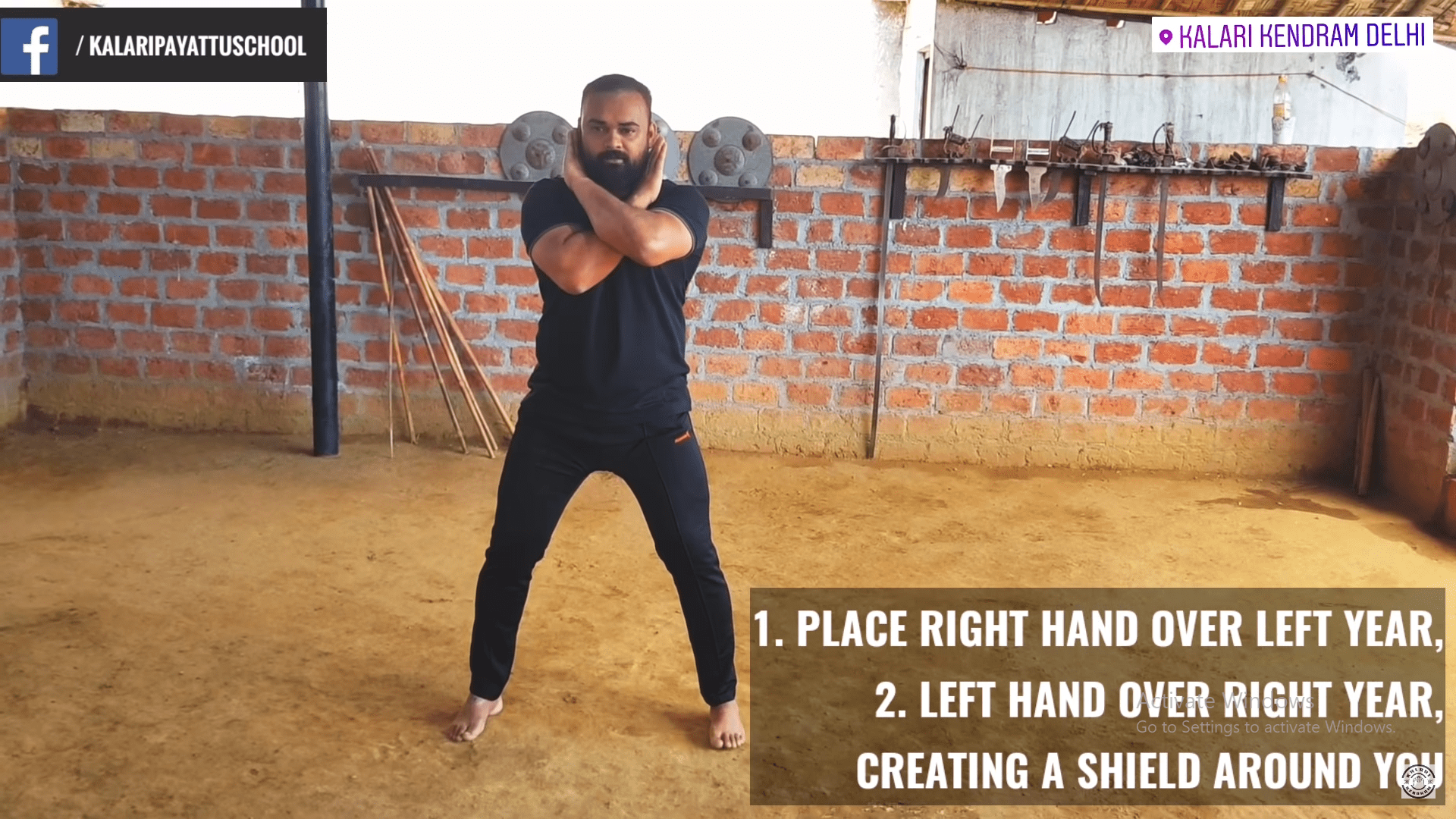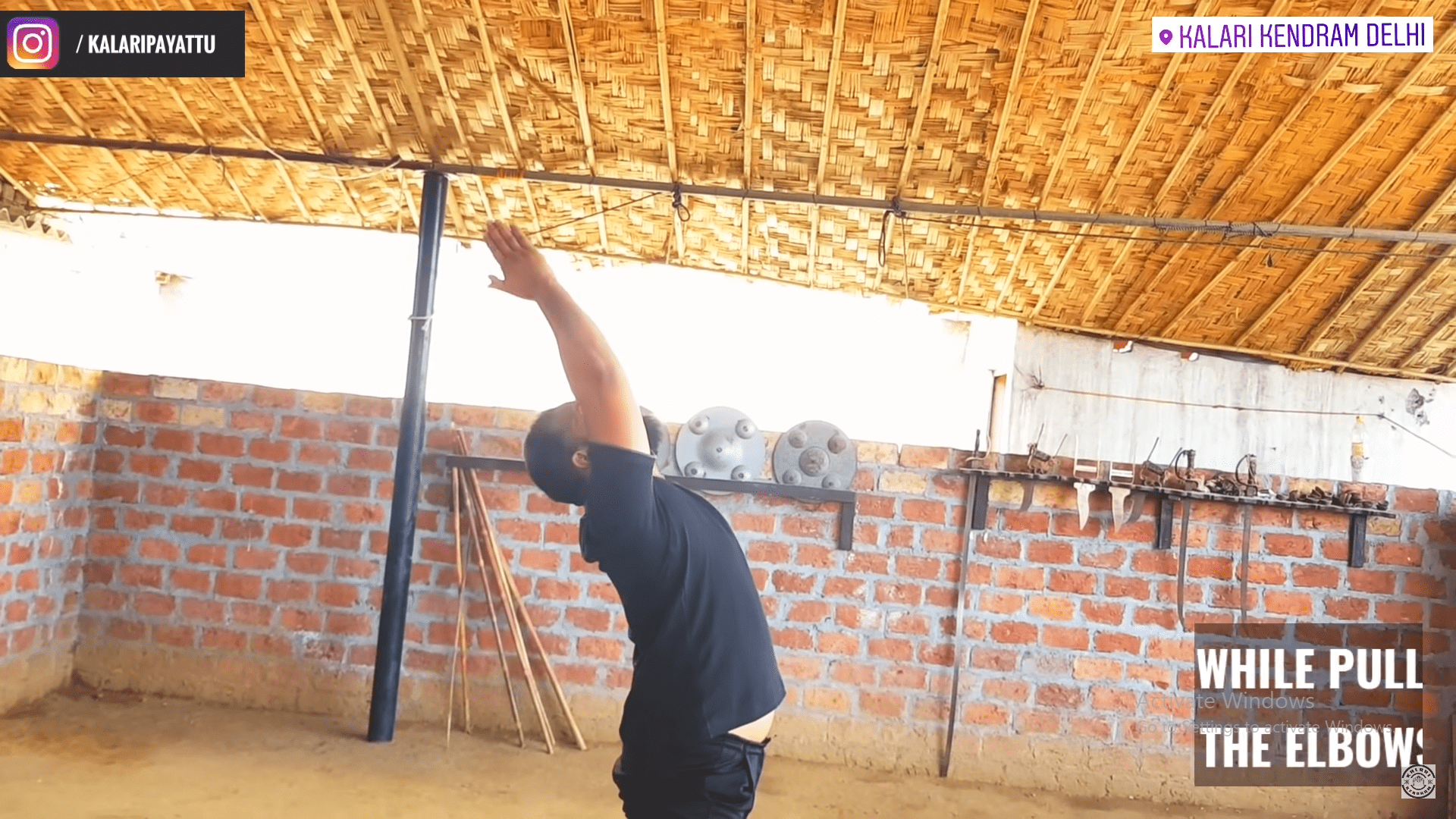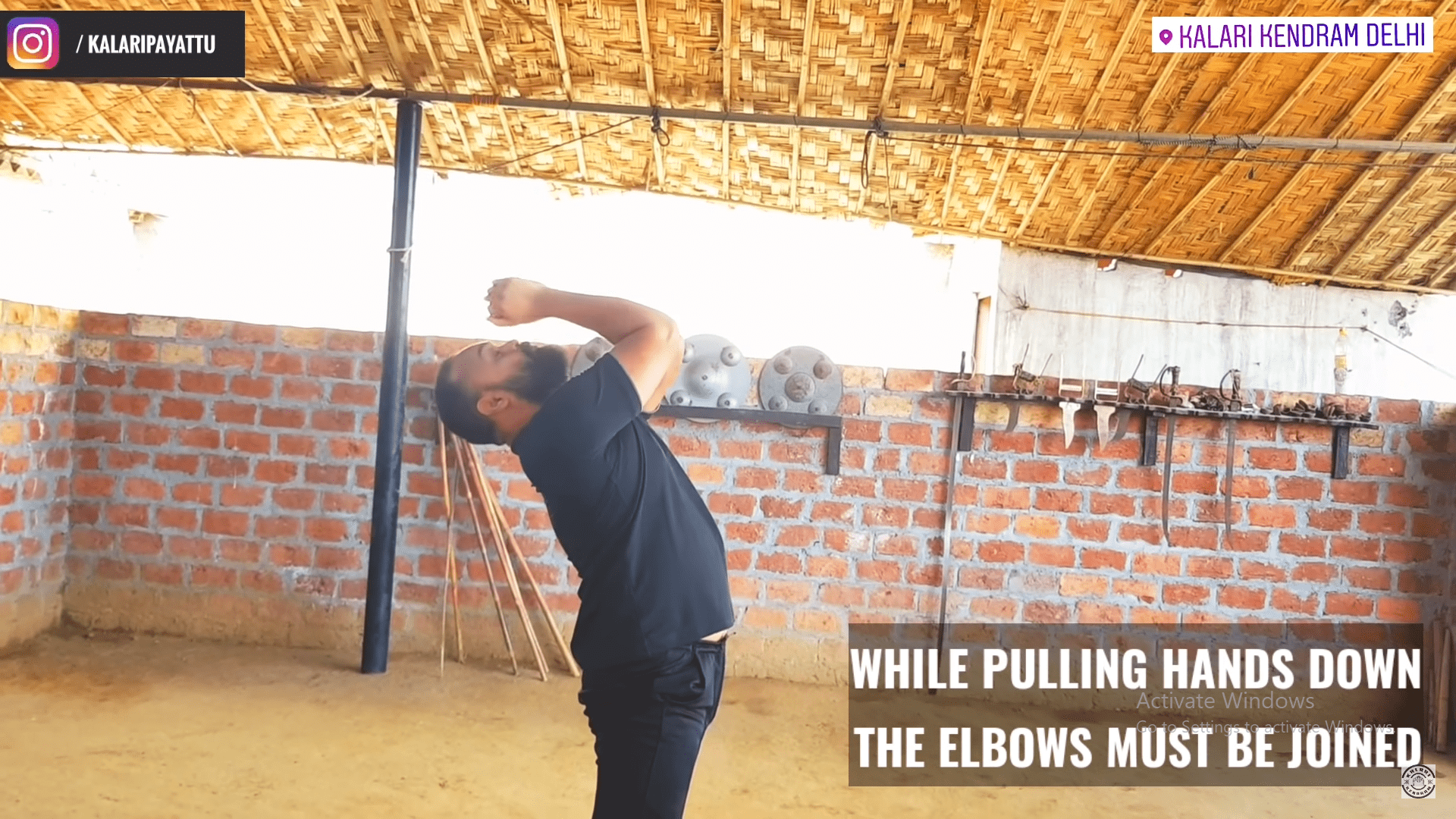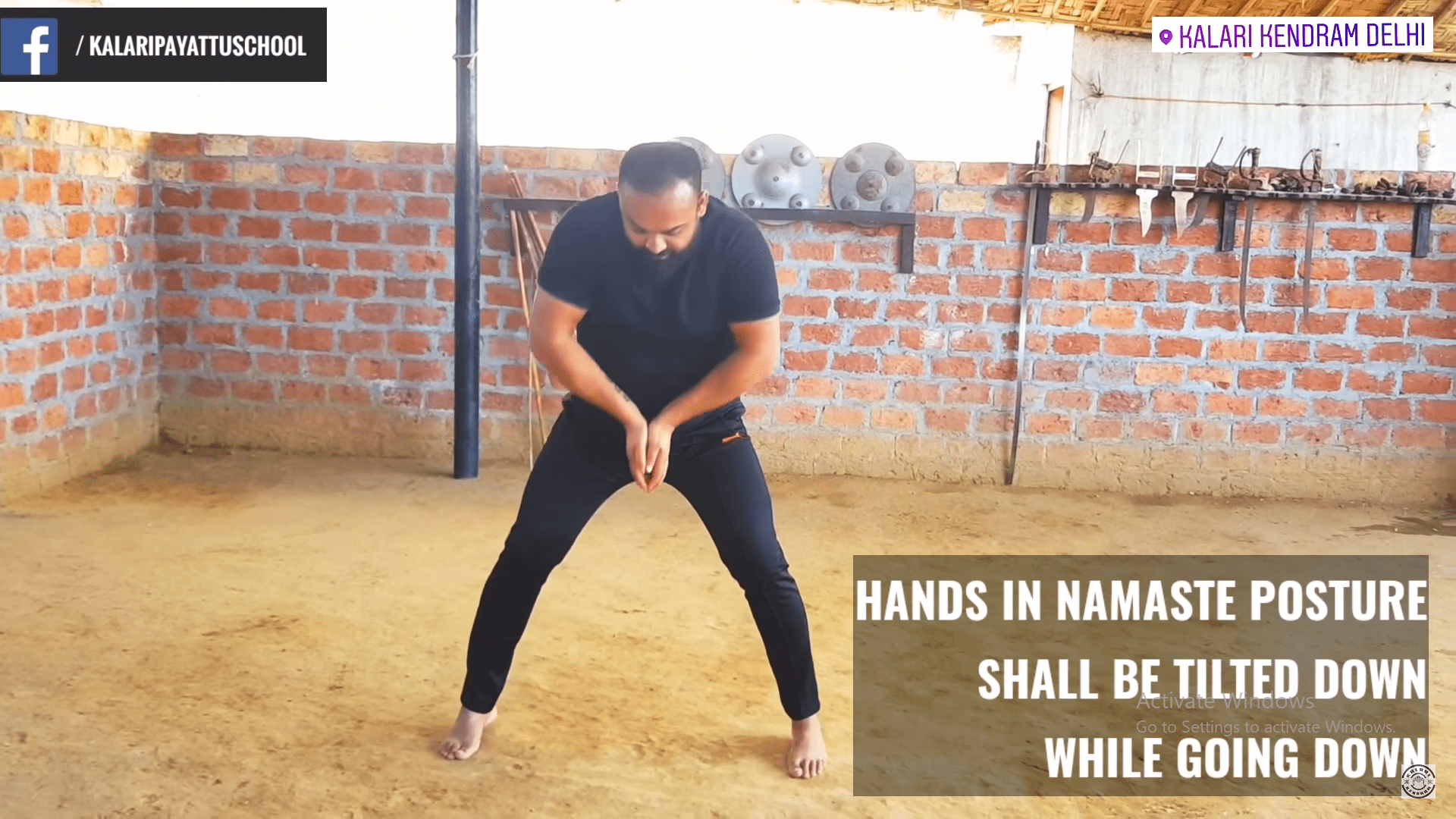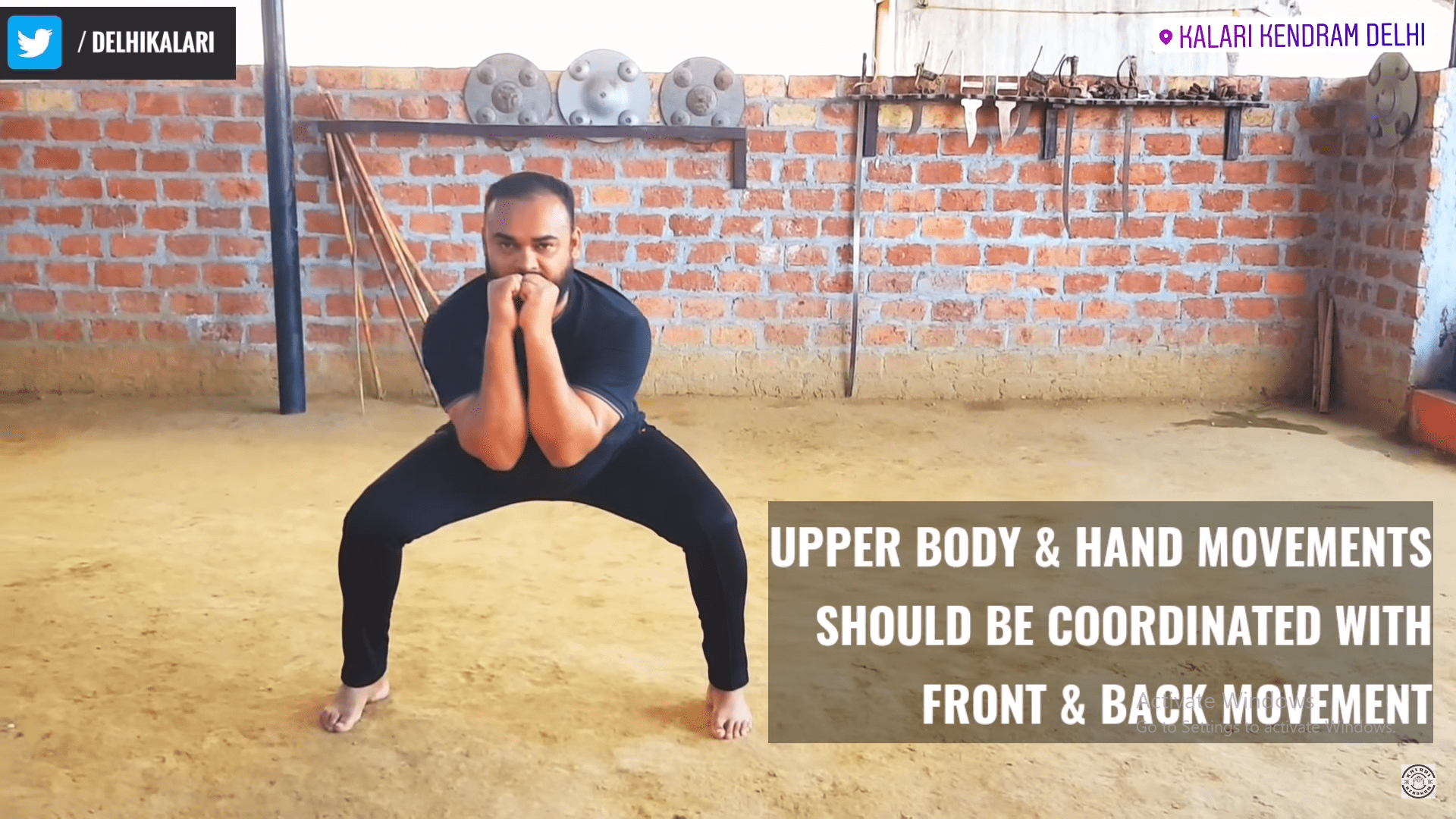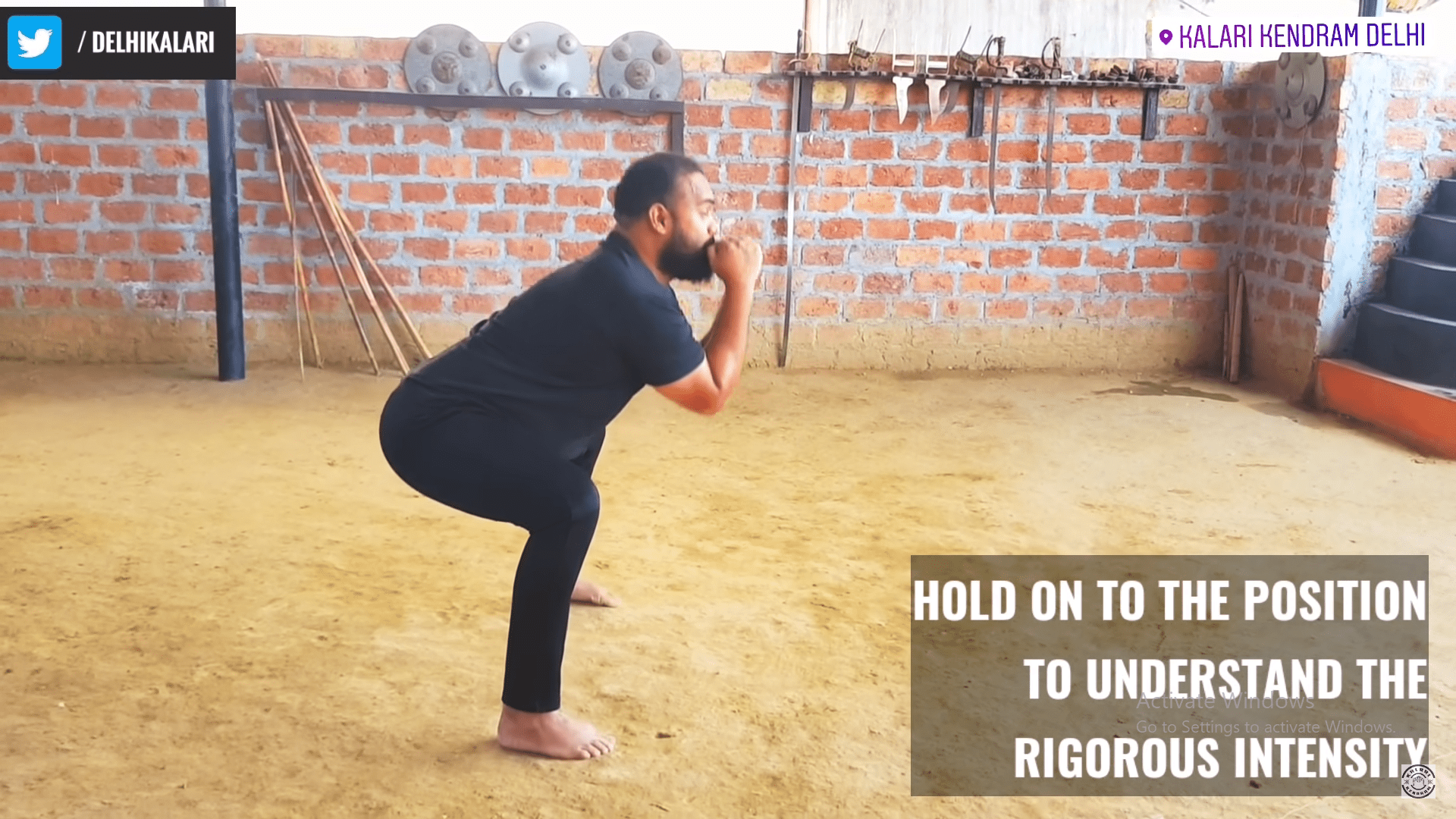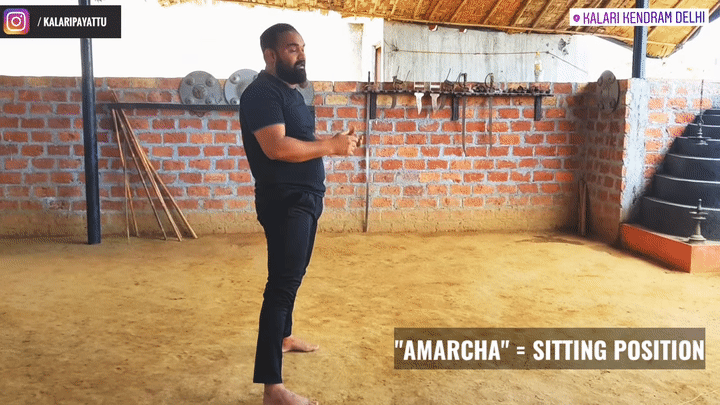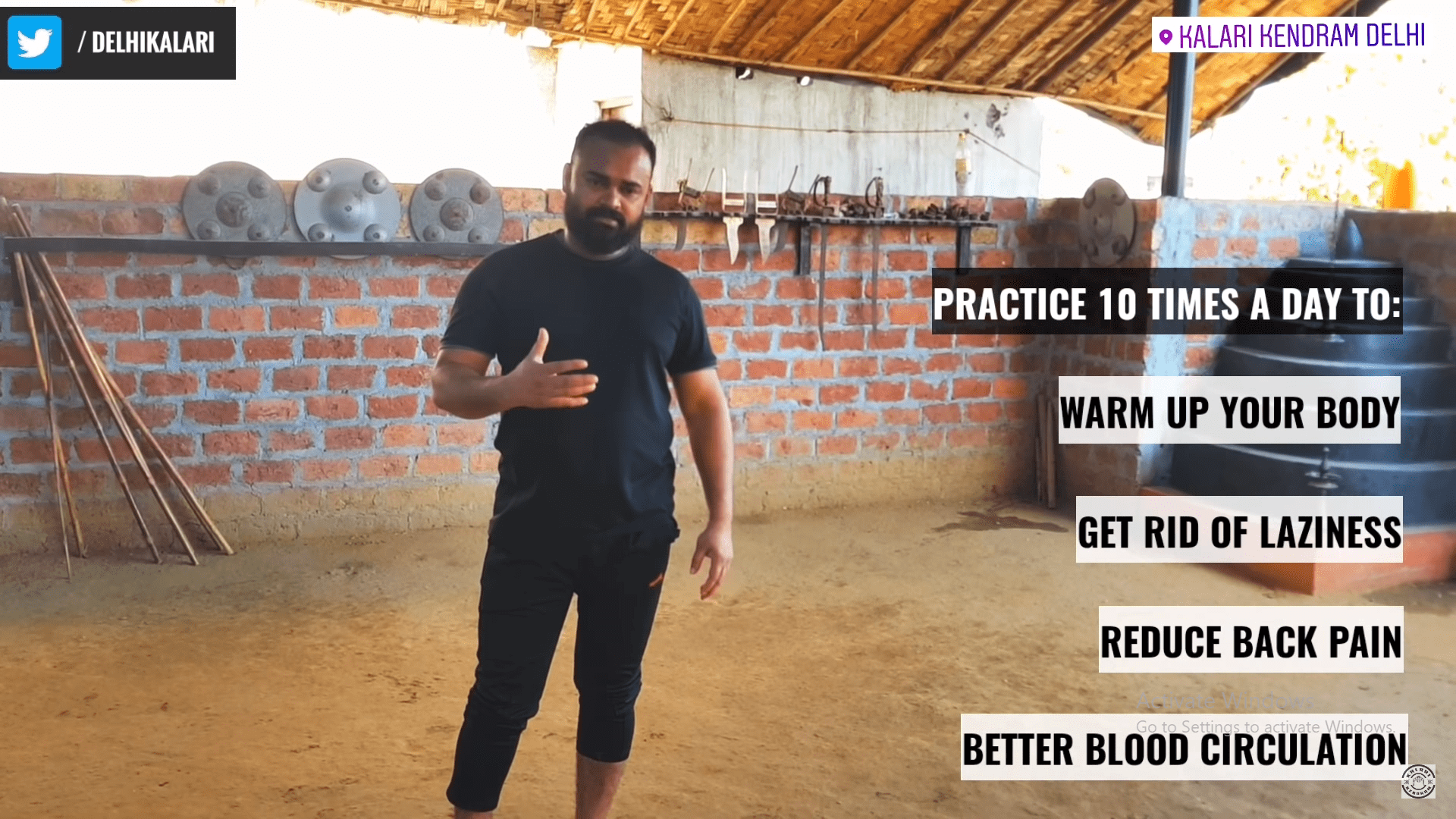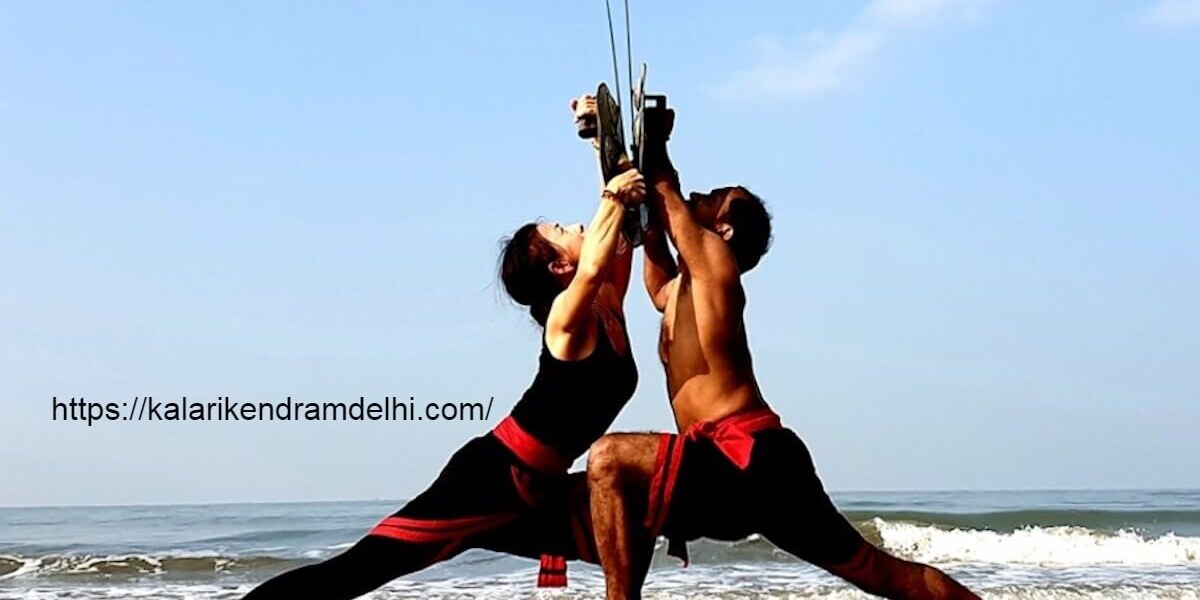In a recent Global awards event in Mumbai, “Action Hero Fitness Awards”, hosted by Vidyut Jammwal, Gurukkal Shinto Mathew of Kalari Kendram has been chosen and awarded for excellence
Have you ever wondered where Martial Arts originated from?
What is Kalari?
Kalari is a short form of Kalaripayattu, an ancient martial art from Kerala, India. It has a long-standing history and uniqueness among Indian martial arts, as it combines physical, mental, and spiritual aspects of training. Kalari is not just a way of fighting, but also a way of life, culture, and heritage of India.
Its unique aspect is that this Martial Art of Kalari is derived directly from nature.
It is completely based on the natural survival instincts of any living being and its unique techniques of combat are based on the bizarre and strategic survival skills of animals in their wild. The form majorly focuses on making a mind and body as adaptable to any circumstances as animals.
Why was Kalari Banned?
Kalari faced a major challenge and threat in the 19th century when the British colonial authorities imposed a ban on it in Kerala. This ban had significant political and Imperial reasons which we discuss below, this ban had far-reaching repercussions on the future development and preservation of Kalari.
The British wanted to establish their control and dominance over Kerala, which was rich in natural resources, especially spices which were invaluable to the local people.
The main factors and events that led to the ban on Kalari in Kerala in 1804 by the British was the political and military threat posed by the warrior kings of Kerala who were well trained in the art of Kalari and used it naturally as a means of defense and rebellion against the British rule. Britishers faced fierce resistance from the local rulers and fighters, who were trained in Kalari and used various weapons and techniques to counter the British forces. They feared that the martial art would embolden a revolution and lead to the end of their rule.
Did you know that what we practice today is just the revived version left out of original martial art of Kalaripayattu that was once banned for its dangerous and ferocious character?
One of the most prominent examples of this resistance was King Pazhassi Raja, who was a warrior prince and de facto head of the kingdom of Kottayam. He waged a guerrilla war against the British from 1793 to 1805, using his trained Kalari fighters and local support. He earned the epithet “Kerala Simham” (“Lion of Kerala”) for his bravery and courage. The Britishers were not ready for this courageous act of revolt. So the fear and prejudice of the British towards the native martial arts which they considered barbaric, dangerous, and violent art that threatened their authority and security paved the way for its banishment.
They also misunderstood some of the rituals and philosophies of Kalari, such as the worship of weapons, the use of medicinal oils, and the concept of vital points or marmas. They regarded these as signs of idolatry, witchcraft, and sorcery. Between 1804 and 1947, they also prohibited the ownership of weapons and the practice of weapon training.
Needless to say, in general, The British had a colonial mindset that viewed the Indian people as uncivilized and backward, and their traditions and practices as superstitious and irrational. They wanted to impose their own culture and values on the Indians and suppress any form of dissent or opposition.
What were the Consequences of the Kalari Ban?
The Kalari ban had a devastating effect on the cultural heritage of the Malabar region of Kerala and a sudden decline in Kalari gurukuls and martial arts practice as a whole. The after-effects also led to the closure of most of the major Kalari training grounds (Kalari sangham) and the loss of many masters (gurukkal) and practitioners (sishya).
The British enforced the ban with harsh measures, such as confiscating weapons, arresting or killing instructors, burning down schools, imposing fines or imprisonment on students, and spreading propaganda against Kalari.
Many Kalari practitioners were forced to abandon or practice Kalari in hidden underground arenas in silence, or to migrate to other regions or countries where they could continue it. As a result, Kalari suffered a severe setback in its popularity, prestige, and transfer of authentic teachings from one generation to another.
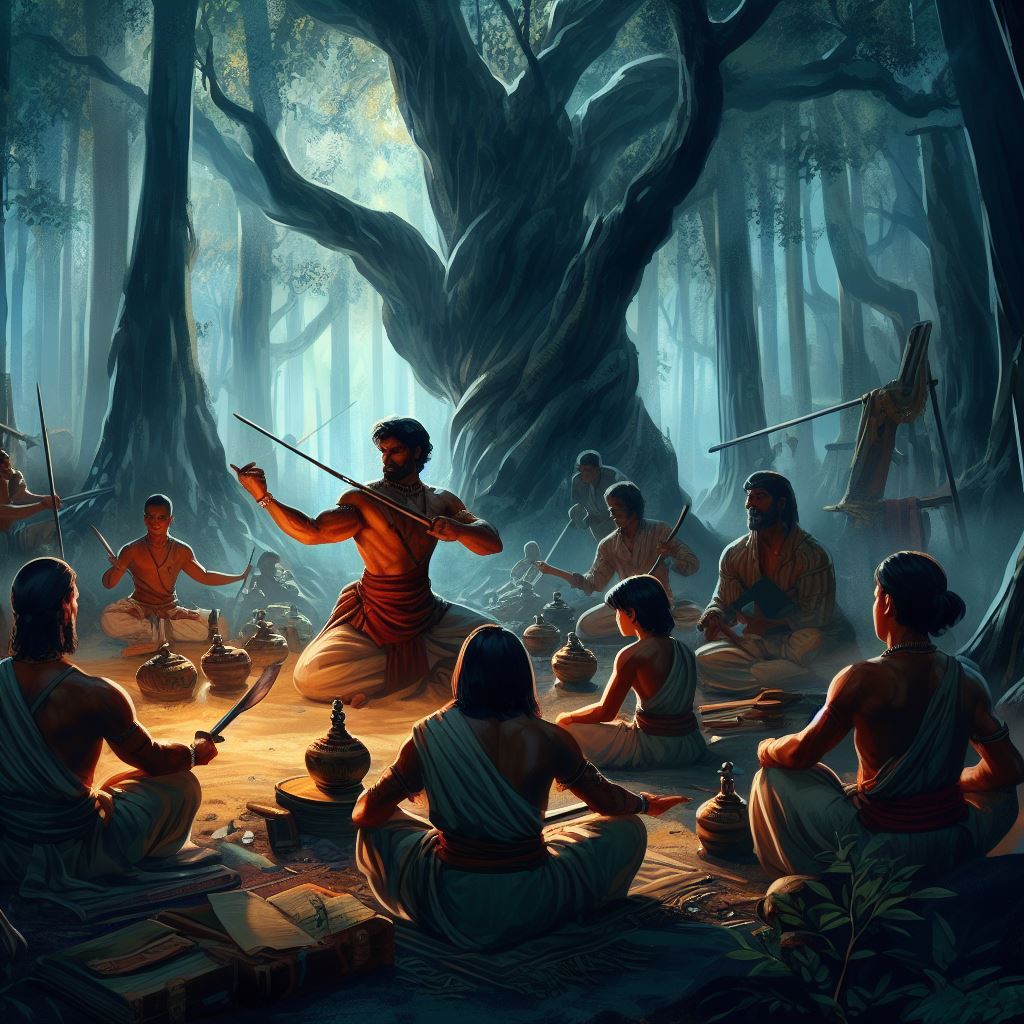
Gurukal teaching Kalari in forest
What we see today is the result of the survival and preservation of Kalari in some remote areas and communities, where it was practiced secretly or under disguise.
Some great Gurukkals of Kalari managed to keep alive their tradition of Kalari by passing it on to their family members or trusted disciples in secluded places or under different names.
Some Kalari practitioners practiced Kalari under the guise of folk dances or religious rituals, such as Kathakali or Theyyam. These methods helped to preserve some aspects of Kalari for future generations.
Thanks to the efforts of some dedicated masters, students, and supporters who are the pioneers for the revival and resurgence of Kalari in the 20th century, who revived the vanishing knowledge, public interest, and awareness of Kalari through their secret abhyasa , performances, and some written texts.
Notable figures who contributed to Kalari Revival
Kottackkal Kanaran Gurukkal was a Kalaripayattu gurukkal, who single handedly led the movement of the revival of Kalarippayattu after British rule with the support and full-fledged aid of his two devoted shishyas, C.V.Narayanan Nair (1893-1979), also known as C.V.N.Kalari Gurukkal, who established several kalari sanghams across Kerala and trained many students in both northern (vadakkan) and southern (thekkan) styles of Kalari.
He also wrote several books on Kalari history, philosophy, and techniques. He is widely regarded as one of the pioneers of the modern Kalari revival movement and Chirakkal T. Sreedharan Nair, who rose to prominence as one of the primary reasons for Kalari’s conservation by preserving and transmitting the martial art during the twentieth century through his unparalleled skills, practice, and books that act as a guidance for the art of Kalari today.
Conclusion
In this article, we have seen how Kalari, an ancient martial art from Kerala, faced a ban by the British colonial authorities in the 19th century, and how it declined, survived, and revived over time. Kalari is an art form that has sustained the test of time and today we have more than 1000 kalaris all over India and worldwide and is a constantly expanding art of India today.
केरला मसाज़ क्या है?
केरला मसाज़ एक प्रकार का आयुर्वेदिक मसाज़ है जो कि भारत की आयुर्वेदिक चिकित्सा प्रणाली से जुड़ा हुआ है। इस मसाज़ का मुख्य उद्देश्य शरीर के तंतु मर्मों को प्राप्त स्थिति में लाने, मांसपेशियों को शांत करने, मानसिक और शारीरिक संतुलन को सुधारने, तंतु-तंत्रिका प्रणाली को उत्तेजना देने आदि के लिए होता है।
केरला मसाज़ का एक महत्वपूर्ण फीचर यह है कि यह मसाज़ विशिष्ट और धैर्यपूर्ण स्वरूप से किया जाता है। इसमें तेलों का प्रयोग होता है, जो कि आयुर्वेदिक गुणों से भरपूर होते हैं और विभिन्न तंतु मर्मों को स्तिमुलेट करने में मदद करते हैं। यह मसाज़ अक्सर धन्वंतरि अवस्था के विभिन्न विधियों का संयोजन होता है, जिनमें स्वेदन, दही पिंड स्वेद, और खेर स्वेद शामिल हो सकते हैं।
केरला मसाज़ के अनुयायियों का मानना है कि यह मसाज़ शारीरिक और मानसिक स्वास्थ्य को सुधारने, तनाव को कम करने, शारीरिक थकान को दूर करने, और प्राकृतिक रूप से प्रणालीगत संतुलन को साधारण करने में मदद कर सकता है।
केरला मसाज की तकनीक
केरला मसाज एक पारंपरिक मसाज तकनीक है जो कलरिपयट्टु, एक प्राचीन भारतीय युद्ध कला, से उत्पन्न होती है। इसमें विशिष्ट मसाज स्ट्रोक्स और तकनीकों को मिलाकर आराम, लचीलापन, और समग्र कल्याण को बढ़ावा दिया जाता है। यहाँ कलरी मसाज की तकनीक की एक अवलोकन दिया गया है:
- तैयारी: मसाज के प्राप्तकर्ता आमतौर पर एक चटाई या सुखद सतह पर लेटते हैं। प्रैक्टिशनर एक ध्यानात्मक मानसिक स्थिति में शुरू करते हैं, सकारात्मक ऊर्जा और इरादे पर ध्यान केंद्रित करते हैं।
- वार्म-अप: शरीर को मसाज के लिए तैयार करने के लिए, प्रैक्टिशनर आमतौर पर हलके आवेग और खून की संचारण को बढ़ाने के लिए हलके व्यायाम और गतिविधियों का प्रदर्शन कर सकते हैं।
- जड़ी-बूटी तेलों का उपयोग: कलरी मसाज के दौरान पारंपरिक आयुर्वेदिक तेलों का उपयोग आमतौर पर होता है जिनमें जड़ी-बूटियां शामिल होती हैं। ये तेल प्राप्तकर्ता के शरीर के प्रकृति और आवश्यकताओं के आधार पर चयन किए जाते हैं। प्रैक्टिशनर इन तेलों को पूरे शरीर पर लगाते हैं, जिससे जड़ी-बूटियां त्वचा में प्रवेश करती हैं और औषधीय लाभ प्रदान करती हैं।
- विशिष्ट स्ट्रोक्स और तकनीकें: मसाज में तेज़ स्ट्रोक्स, लहराती हुई गतिविधियाँ, और विशिष्ट बिंदुओं और ऊर्जा चैनलों पर दबाव की मिलान-जुलन का संयोजन शामिल होता है। प्रैक्टिशनर हाथ, उंगलियाँ, हथेलियाँ, कोहनियाँ, और कभी-कभी पैर भी दबाव डालने के लिए उपयोग करते हैं। ये तकनीकें मांसपेशियों के तनाव को कम करने, लचीलापन को बेहतर बनाने, और ऊर्जा की प्रवाह को उत्तेजित करने का उद्देश्य रखती हैं।
- स्ट्रेचिंग और मानिपुलेशन: कलरी मसाज में आमतौर पर सक्रिय मानिपुलेशन और जोड़ों की मानिपुलेशन शामिल होती है जो गतिशीलता और लचीलापन में सुधार प्रोत्साहित करती है। ये तकनीकें संकूचन को दूर करने में मदद करती हैं और बेहतर गतिमान क्षेत्र को प्रोत्साहित करने में मदद करती हैं।
- ऊर्जा संतुलन: कलरी मसाज शरीर की महत्वपूर्ण ऊर्जाओं (दोष) और ऊर्जा मार्गों (नाडिस) के संतुलन के सिद्धांतों पर आधारित है। मसाज तकनीकों का उद्देश्य ऊर्जा की प्रवाह को पुनर्स्थापित करना है, समग्र समरसता और कल्याण को प्रोत्साहित करना।
- ध्यानित क्षेत्रें: मसाज विशेष चिंता क्षेत्रों, जैसे कि तनावित मांसपेशियाँ, जोड़ों, और किसी किस्म के शक्ति केंद्रों (चक्र) का लक्ष्य कर सकता है। प्रैक्टिशनर रूपांतरण की तकनीकों को व्यक्तिगत आवश्यकताओं के आधार पर अनुकूलित करते हैं।
- मसाज के बाद की देखभाल: मसाज के बाद, प्राप्तकर्ता से आवश्यकता होने पर आराम करने की सलाह दी जाती है और तेलों और तकनीकों को उनके औषधीय प्रभाव को जारी रखने की अनुमति दी जाती है। मसाज के बाद त्वचा में तेलों को विलीन होने में मदद के लिए गरम नहाने की सामान्य बात होती है।
केरला मसाज़ कैसे किया जाता है ?
केरला मसाज़ को विशेष तकनीकों का उपयोग करके किया जाता है जो कि शारीरिक और मानसिक स्वास्थ्य को सुधारने में मदद कर सकते हैं। यहां केरला मसाज़ की कुछ आम तकनीकों की व्याख्या की गई है:
- शिरोधारा (Shirodhara): इसमें तेल की धारा माथे की ऊपर से धीरे-धीरे गिराई जाती है, जिससे माथे की चक्रीवृत्ति को शांति मिलती है। यह मानसिक तनाव को कम करने में मदद कर सकता है।
- अभ्यंगम (Abhyangam): इसमें आयुर्वेदिक तेल का उपयोग करके सम्पूर्ण शरीर की मालिश की जाती है। यह शारीरिक थकान को दूर करने, मांसपेशियों को शांत करने, और शारीरिक संतुलन को सुधारने में मदद कर सकता है।
- पिंड स्वेद (Pinda Sweda): इसमें शरीर के विभिन्न हिस्सों पर तापीय गर्म द्रव्यों के पिण्डों का प्रयोग करके मालिश की जाती है। यह मांसपेशियों को राहत पहुंचाने, तंतु-तंत्रिका प्रणाली को उत्तेजित करने, और शारीरिक संतुलन को सुधारने में मदद कर सकता है।
- खेर स्वेद (Navara Kizhi): इसमें चावल के धान को आयुर्वेदिक तेल में भिगोकर पिंडों का निर्माण किया जाता है, और उन्हें शरीर पर दबाया जाता है। यह मांसपेशियों को शांति पहुंचाने, शरीर को ताजगी देने, और तंतु-तंत्रिका प्रणाली को सक्रिय करने में मदद कर सकता है।
- पिचु (Pizhichil): इसमें गरम तेल को सम्पूर्ण शरीर पर धाराओं के रूप में प्रयोग किया जाता है। यह शारीरिक और मानसिक तनाव को कम करने, मांसपेशियों को शांत करने, और शारीरिक संतुलन को सुधारने में मदद कर सकता है।
केरला मसाज़ किसके लिए उपयोगी है?
केरला मसाज़ का उपयोग विभिन्न तरह की स्वास्थ्य स्थितियों में किया जा सकता है, लेकिन यह व्यक्तिगत स्वास्थ्य स्थिति, आवश्यकताओं, और चिकित्सक की सलाह के आधार पर किया जाना चाहिए। यहां कुछ स्थितियाँ दी गई हैं जिनमें केरला मसाज़ का उपयोग किया जा सकता है:
- तनाव और मानसिक चिंताएँ: केरला मसाज़ का नियमित अभ्यास करने से तनाव कम हो सकता है और मानसिक चिंताएँ कम हो सकती हैं।
- शारीरिक थकान और दर्द: यह मसाज़ मांसपेशियों को शांति पहुंचाने में मदद कर सकता है और शारीरिक थकान को कम करने में सहायक हो सकता है।
- सिरदर्द और माइग्रेन: केरला मसाज़ का शिरोधारा तकनीक सिरदर्द और माइग्रेन के लिए उपयोगी हो सकती है।
- नींद की समस्याएँ: यह मसाज़ नींद की समस्याओं को कम करने में मदद कर सकता है और अच्छी नींद को प्रोत्साहित कर सकता है।
- शारीरिक संतुलन की समस्याएँ: केरला मसाज़ का उपयोग शारीरिक संतुलन को सुधारने में किया जा सकता है, जैसे कि वजन प्रबंधन और तंतु-तंत्रिका प्रणाली की सामर्थ्य में सुधार के लिए।
- जोड़ों के दर्द और संबंधित समस्याएँ: कुछ विशेष तकनीकों का उपयोग करके केरला मसाज़ जोड़ों के दर्द और संबंधित समस्याओं को कम करने में मदद कर सकता है।
केरला मसाज़ के लिए कौन उपयुक्त नहीं है ?
केरला मसाज़ का उपयोग कुछ विशेष स्थितियों या लोगों के लिए उपयुक्त नहीं हो सकता है। निम्नलिखित कुछ स्थितियाँ और लोग उनके लिए केरला मसाज़ का उपयोग नहीं कर सकते हैं:
- गर्भावस्था: गर्भवती महिलाओं के लिए केरला मसाज़ का उपयोग करना असुरक्षित हो सकता है, क्योंकि कुछ तकनीकें गर्भावस्था में नुकसान पहुंचा सकती हैं।
- खून की कमी (एनीमिया): खून की कमी वाले व्यक्तियों के लिए केरला मसाज़ का उपयोग नहीं किया जाना चाहिए, क्योंकि इसमें तेलों का प्रयोग होता है जो खून की कमी को बढ़ा सकते हैं।
- चिकित्सक की सलाह बिना: किसी चिकित्सक की सलाह के बिना केरला मसाज़ का उपयोग नहीं करना चाहिए, क्योंकि आपकी व्यक्तिगत स्वास्थ्य स्थिति के आधार पर ही इसका उपयोग करना चाहिए।
- चर्म रोग (स्किन इन्फेक्शन): केरला मसाज़ विशेष तरह से तेलों के प्रयोग के कारण चर्म रोग में अधिक संक्रमण का खतरा बढ़ा सकता है।
- उच्च रक्तचाप (हाइपरटेंशन): अगर आपका उच्च रक्तचाप है, तो केरला मसाज़ का उपयोग करने से पहले चिकित्सक की सलाह लेना आवश्यक है।
- शरीर में गांठें (ट्यूमर्स): केरला मसाज़ ट्यूमर्स और अन्य शरीर में गांठों के कारण हो सकने वाले और उनके लिए उपयुक्त नहीं हो सकता है।
- सामान्य बुखार और संक्रमण: यदि आपके पास कोई सामान्य बुखार या बीमारी है, तो केरला मसाज़ का उपयोग करने से पहले चिकित्सक से सलाह लेना उचित होता है।
उपरोक्त मसाज की बुकिंग के लिए कृपया यहाँ क्लिक करें। बुकिंग के लिए:
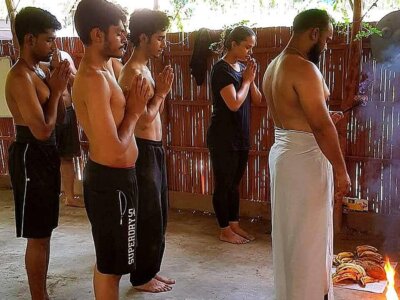
World’s 1st ever Martial art is born in INDIA.
Its not everyday that a treasured art like Kalaripayattu is born and you know it is nothing ordinary when its the creation of not humans but the Gods themselves.
It is carefully constructed with the sharp observations made on the complexities of nature and survival instincts, prey techniques, and basic anatomy of wild animals.
Are you ready to unleash your inner beast and master the ancient art of warfare? If so, you might want to learn Kalaripayattu, the legendary martial art that originated in India thousands of years ago. Kalaripayattu is not just a physical exercise, it is a spiritual journey that will transform your life.
Kalaripayattu is based on the observation and imitation of nature’s fierce creatures, such as elephants, lions, tigers, and snakes. By learning their movements, postures, and techniques, you can develop your fighting skills and survival instincts. You can also enhance your awareness, agility, and balance, just like an elephant, one of the most formidable fighters in the animal kingdom.
One of the most important aspects of Kalaripayattu is the Vadivu or the Animal Stance. There are eight main Vadivus, each named after a different animal. In this article, we will focus on the Gajavadivu or the Elephant Stance. We will guide you through the steps of mastering this stance, and show you how it can benefit your physical and mental well-being.
The Gajavadivu is a symbol of strength, grace, and intelligence. It involves standing on one leg with the other leg bent at the knee and raised in front of the body. The arms are extended to the sides with the palms facing down. The head is tilted slightly to one side with the eyes looking straight ahead.
The Gajavadivu helps you to improve your stability, flexibility, and coordination. It also strengthens your core muscles and legs and tones your abdomen and hips. It also boosts your confidence and concentration and calms your mind.
Gaja Vadiv Step by Step:
1) Initial Stance: Stand straight with your feet together.
2) Measure Shoulder Width:
Protrude your heels outward to shoulder-width apart, keeping your toes touching each other. Align the heels with the toes, ensuring your feet are parallel and shoulder-width apart.
3) Make Body Shield
Bent the elbows and held in front of the body, with the hands open and palms facing forward. This will create a shield around your body.
4) Inhale and Backbend:
- Inhale deeply and join your hands in Namaskar Mudra (prayer position) overhead.
- Take a slight backbend as you raise your arms.
5) Exhale and Forward Bend:
- Breathe out as you gently lower your palms towards the floor, maintaining the Pranam Mudra.
- Take it all the way between your legs and then lift the arms pointing the thumb towards the forehead. Make your torso parallel to the floor.
- Touch your elbows together, curl your fingers, and point your knuckles upwards
- Exhale and maintain a neutral, flat back as you bend forward.
6) Squat:
- While squatting, lower your hips, tucking your tailbone inward. Maintain
strong legs in an L shape, ensuring that your knees are perpendicular to your ankles, and your upper thighs remain parallel to the floor. - Make your torso parallel to the floor during this squat.
- Keep the forearms close together as you take them between your legs.
- Lift your arms with your thumbs pointing towards your forehead.
- Touch your elbows together, curl your fingers, and point your knuckles upwards.
- Touch the tip of your thumbs to your forehead.
7) Focus and Hold:
- Focus your gaze softly between your hands or on a point in between your eyebrows.
- Maintain this Gajavadiv posture for at least 3 to 6 long breaths or as per your capacity.
- Keep increasing your capacity, you must be able to sustain any pressure from above
Precautions while doing Gajavadi:
● Foot Position: Ensure that your feet are not too wide apart, and your toes should point forward. Keep your legs straight and turn your heels inward. And the distance between legs should be of shoulder width. Press your feet firmly on the ground.
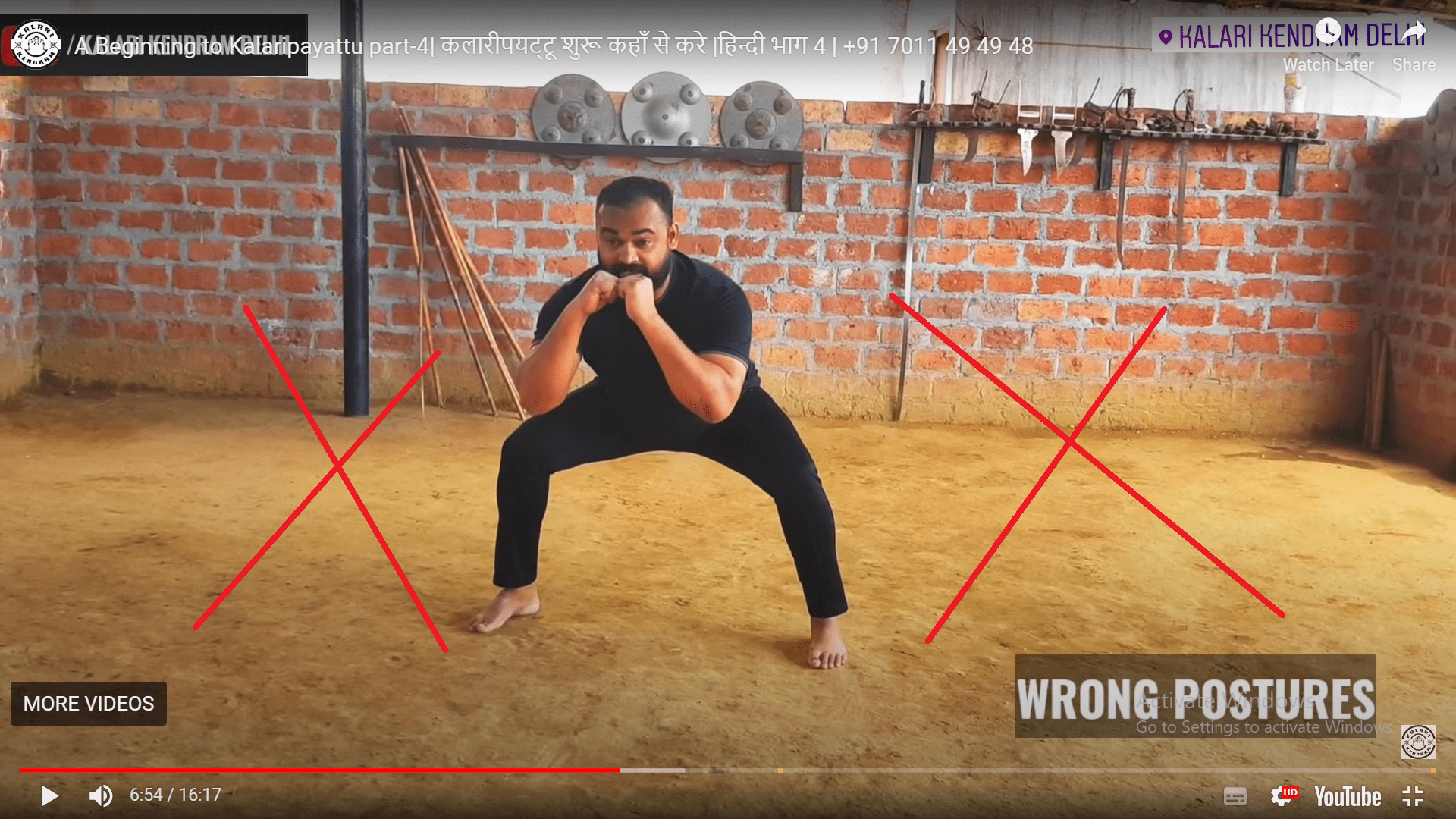
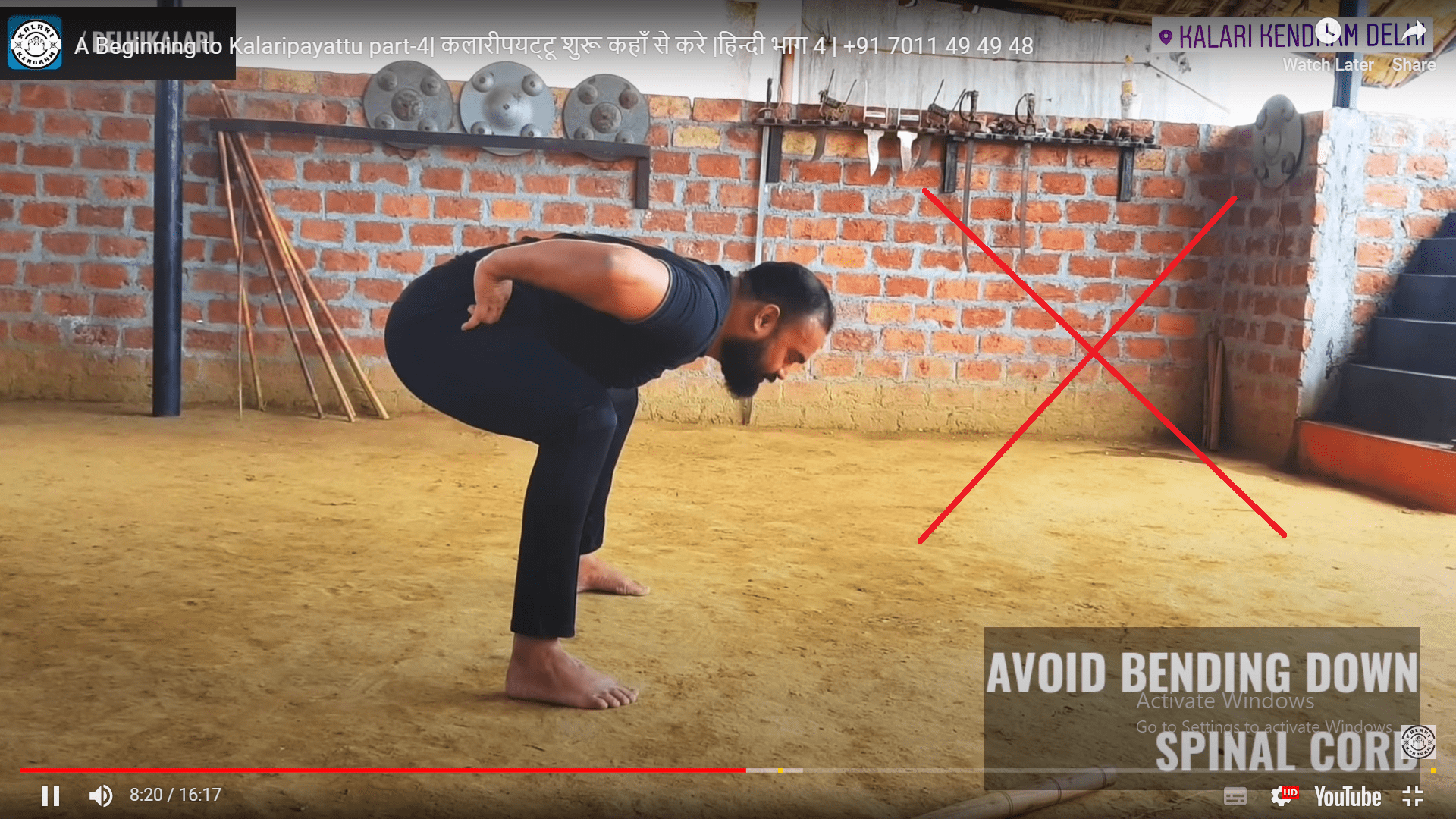
● Balance and Weight Distribution: Your weight should be distributed on your thighs and hips, not on your knees. Focus your power into your legs as you pull your body back.
Maintain your balance and posture throughout the exercise. Focus your power in your legs, hips and thighs.
● Avoid Strain: Be cautious not to overstrain your body while performing this posture.
● Practice: Practice this posture regularly to improve your martial arts skills and body fitness.
Important Lessons from Gajavadi:
LESSON #1
The first lesson that the elephant teaches us is that a warrior’s biggest strength is his strong physical being.
Therefore, the Gaja stance is taught to gain strength in the hips, thighs, spine, and ankle with the help of a stance called AMARCHA.
This is indisputably the best workout for your leg strength and backbone flexibility. It is power-generating in its character and hence thorough practice is needed to attain this stance.
LESSON #2
The second lesson is learned while observing the movement of its trunk.
A Kalari practitioner is taught to move in such a manner that it attains the unmatched flexibility of the trunk of an elephant that it uses to grab, pull, and attack an opponent.
Therefore, in the Gaja posture hands are taught to move in a particular form while using the whole body flexibly, especially the ‘spine’ and take the stance of a shield in front of the chest to protect the weak areas of the neck, collar bone, chin and face in an alert position of defense.
Just by looking one cannot know how strengthening and challenging this hand gesture with jointed elbows, covered abdomen, and straightened spine is unless one does it themselves.
LESSON #3
The third lesson that we learn from an elephant is that of its inexhaustible agility and swiftness irrespective of its size.
Therefore, in Kalari, the warrior is taught to achieve enough courage and strength to fight the whole crowd and disperse it alone singlehandedly.
This stance in its various forms and application of combat is one of the best means to achieve this tremendous speed and vigor in the body irrespective of body weight, age, sex, and physical activeness. in fact, practicing this stance leads to whole-body transformation.
LESSON #4
The fourth and most crucial lesson that we take from an elephant is that of its mental strength which makes it a winner.
Therefore, in Kalari, A warrior is taught to become a ruthless fighter by more of her mental strength than her physical ability. And that mental strength gives the confidence to use the body fearlessly in times of need.
Hence, Kalari Kendram always focuses on teaching the capacity and ability to ‘ take an attack’ as much as taught how ’to attack’ with the rigorous practice of this Gaja vadivu not only instance formation but in a rhythmic -vitality consuming- body movements and holds which boosts the confidence in oneself inside out evidently.
Kalaripayattu is derived from two words- ‘Kalari’ which means ‘Training school’ and ‘Payattu’ means ‘Practising’.
